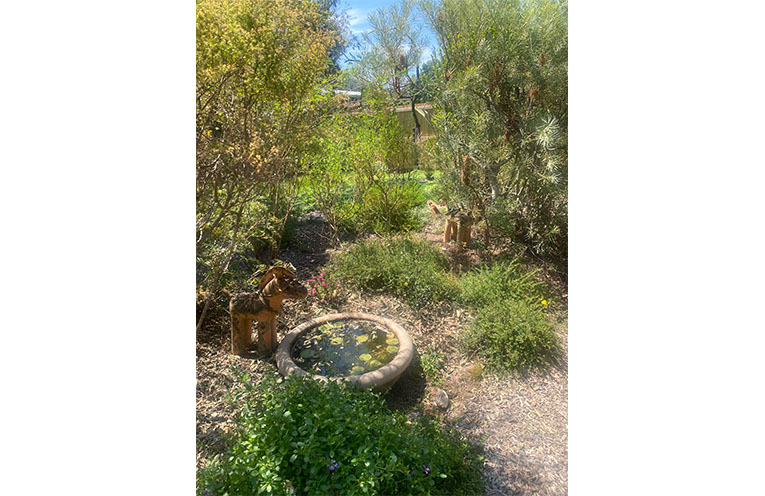
IT is often said that there are many benefits associated with spending time in nature.
“Increasingly, being in nature is recognised as being important,” explains Mat Bell, Senior Ecologist with MidCoast Council.
“Contact with nature benefits human health and well-being by reducing stress, improving mental health, enhancing physical health, and improving cognitive function, like concentration and memory.
“Spending time outdoors can restore mental energy, improve mood, help regulate sleep, and promote connections and nature is a fundamental aspect of human health rather than a luxury.”
And according to Mat, being in and around nature doesn’t necessarily have to involve heading into the bush or some remote wilderness.
“There is a tendency to overlook the benefits of our own gardens when contemplating the benefits of being in nature,” said Mat
“There is an importance, as well as an urgency, to create wildlife-friendly gardens in Australia, and it is well known that biodiversity is diminishing in Australia through a combination of land use pressures, loss of habitat, impacts of exotic animals and a changing climate.”
According to Mat, the house yard can contribute to measures to slow, halt and eventually reverse this decline, and it does not have to involve the traditional quarter acre block.
But where does someone start when it comes to creating wildlife-friendly gardens?
“The first thing to realise is that there are many resources available to assist the home-gardener create a backyard that is pleasing, able to be maintained, and good for biodiversity,” said Mat.
“A quick on-line search for ‘wildlife-friendly gardens’ can get you started.
“The garden can be anything from a courtyard to a rural-residential lot.
“One of the key features of a good yard for biodiversity is the planting of local native plants from different vegetation layers (grasses, groundcovers, shrubs, vines and – if you have the space – trees).
“Plants should provide different food resources, including seeds, nectar and fruit.
“Areas of dense cover provide a safe sheltering space for small native birds.
“The use of native, organic mulch or leaf litter, and providing a safe water source, such as a birdbath or a pond, are also important elements.
“The use of chemicals should be avoided or strictly controlled, and dogs or cats should be confined or mostly kept indoors.
“Native bee homes and nesting boxes can add interest and habitat,” added Mat.
“With awareness and deliberate action, by working with our neighbours, and by being aware of the benefits of nature, our yards can boost local biodiversity and be places of joy and inspiration.”
By John WATTS


